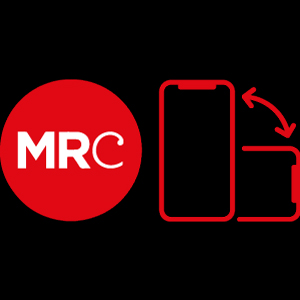by Joan Pedro-Carañana and Miguel Álvarez-Peralta
It has been more than four years now since Podemos erupted on the political scene taking the media by surprise. Most mainstream newspapers and television programmes seemed bewildered – some showed ambivalence and a minority even treated the new party with sympathy. Most TV and radio talk-shows provided space for Podemos’ hard criticism of the government of Mariano Rajoy. With time, however, the media were able to react, adopting an oppositional stand and using propaganda tactics to undermine the credibility of Pablo Iglesias’ party. This opposition became manifest when Unidos Podemos made proposals for media reform. It became clear that the media were willing to give space to criticisms of the abuses of traditional political parties and banks, but that there’s one thing that apparently cannot be done: to propose the democratisation of the media.
While this negative reaction to media reform seemed quite predictable to us (we were aware of similar experiences in the UK), we decided to conduct an academic study to provide empirical evidence for this hypothesis. We analysed the coverage given by eight newspapers with a well-established print edition and seven digital news outlets of the parliamentary proposals for the regulation of the communications landscape.
We researched how the proposals presented by Unidos Podemos were framed and we found a deficit of depth and rigor in the coverage – something that was more pronounced in the case of the traditional press. An analysis of headlines revealed a high level of consensus through the use of specific formulas and demonstrated a limited diversity inside Spanish media.
Podemos made multiple proposals for media reform, including the de-governmentalisation of public media, the elaboration of an Information Statute to protect the rights of journalists, the creation of an independent audiovisual authority, limits on cross-ownership, the development of a campaign for an active audience, the promotion of media cooperatives for the journalists that were victims of large-scale redundancies, support for community, participatory and non-profit media, and the transition to digital radio. However, 72% of all the news media we analysed and 86% of the print press only focused on one single topic, the regulation of media concentration.
We found a significant bias in how the proposals were covered. Two-thirds of the traditional newspapers utilised an authoritarian-repressive framework to represent Podemos’ proposal for the limitation of ownership. They did not clarify the fact that Podemos proposed to expand the existinglimits on direct ownership to cross-ownership. Thus, they hid the fact that the media are already regulated and that limits do exist, thereby avoiding any precise discussion on the specific reforms that were being proposed and how they relate to the existing regulations. Some news outlets even claimed that Podemos wanted to put an end to the free market and that it was attempting to control the media and to limit freedom of expression. They explicitly transmitted fears about the possibility that Podemos could achieve government one day. This framework is also characterised by the use of warlike semantics, with the use of terms like ‘targets’ and ‘finish off’. Moreover, the media that used this framework omitted to mention that the reform proposed by Podemos was recommended by several European institutions and protected by the Spanish Constitution.
The opposite framework was based on a ‘democratic-guarantor’ representation of Podemos’ proposals. Only three out of 15 media sources followed this framework, which presented the proposals as supportive of democracy and plurality, had more descriptive rigour and presented other measures proposed by Podemos. The fact that two of these sources were online media with cooperative ownership by journalists and with significant participation by ‘readers-partners’ confirmed the second hypothesis of the study, namely, that the structural differences in ownership correspond with differences in editorial lines and informative discourses. One of these digital coops actually gave voice to journalists’ unions, which defended the proposals and criticized media manipulation.
Finally, it is also worth noting that four digital news outlets with a progressive or radical editorial line did not cover the information in the first instance (one of them did so later). This absence points to the difficulties of smaller media with low budgets to provide comprehensive coverage of a political scenario with hectic activity. Thus, it also indicates the need to support alternative media. Overall, the study shows the need for a deep programme of media reform that assures plurality and protects journalists and citizens from media manipulation.
The full paper is available here.
Álvarez Peralta, M., & Pedro Carañana, J. (2018). Mediatización de las políticas mediáticas: cobertura de las propuestas de regulación de medios en la XI Legislatura española. Revista Internacional de Comunicación y Desarrollo (RICD), 2(8), 92-106.



